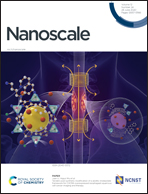A new Dirac nodal-ring semimetal made of 3D cross-linked graphene networks as lithium ion battery anode materials†
Abstract
A novel lithium ion battery (LIB) anode material with high capacity is found, which is made of cross-linked graphene sheets. The new material, named bco-C20, has a 3D honeycomb structure composed of unit cells of 20 atoms, and exhibits a body-centered orthorhombic crystal structure. The thermal, dynamic, and mechanical stabilities of such a material are well evaluated by molecular dynamics simulation, phonon dispersion, and Born–Huang criteria. As a promising semimetal, bco-C20 possesses a unique electronic band structure with cross-linked Dirac nodal-rings. The Fermi velocities are from 8.25 × 105 m s−1 to 10.45 × 105 m s−1, indicating good electronic transport properties. A comparison with most of the 3D carbon materials demonstrates that bco-C20 also has the good material properties of high strength and fracture toughness that are very close to those of graphene. Furthermore, a negative Poisson's ratio of up to −0.25 is very helpful for the new material to bear compressive load. Most importantly, as a promising anode material in LIBs, bco-C20 has a high theoretical capacity of 893 mA h g−1, low diffusion barrier of 0.02–0.12 eV, average open-circuit voltage of 0.41 V, and negligible volume change of 3.7%. Some related properties of lithiated bco-C20 are also evaluated and discussed. This study should be helpful for expanding the family of 3D carbon materials with extraordinary properties as well as their promising applications in advanced energy fields.



 Please wait while we load your content...
Please wait while we load your content...